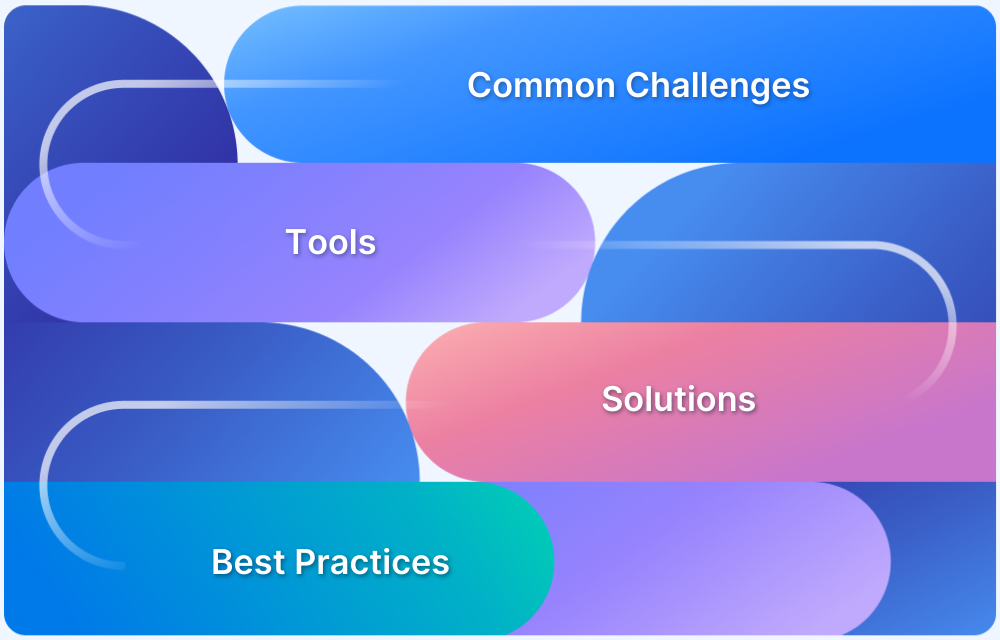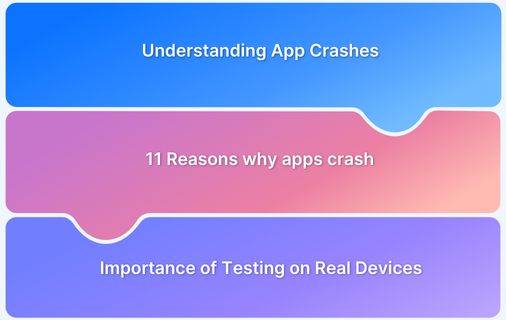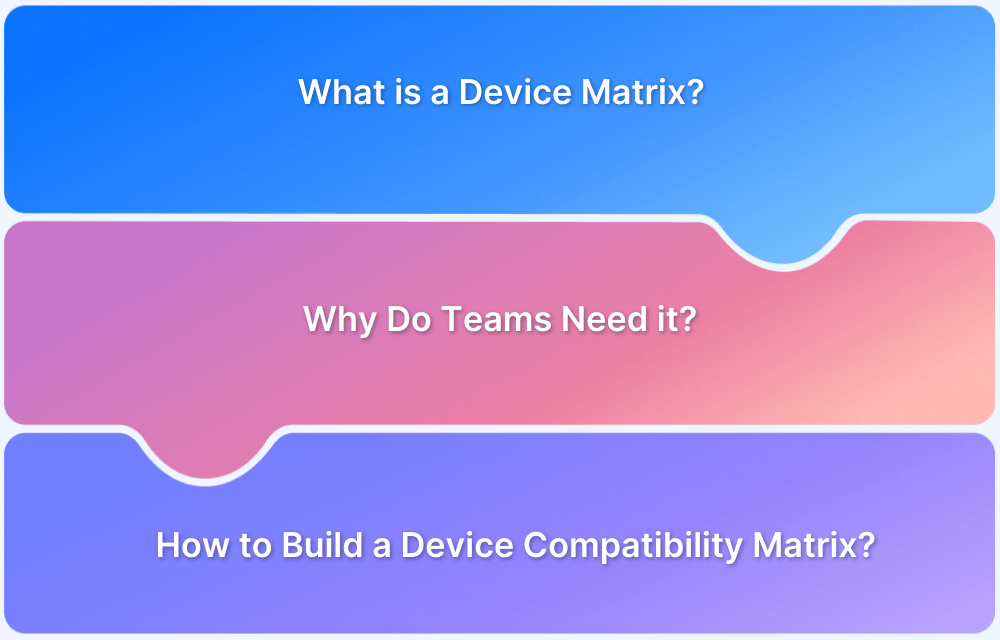Since the release of the first television in 1927, video content consumption has evolved from scheduled broadcasts to on-demand streaming. OTT platforms like Netflix, Apple TV, and Amazon Prime deliver content over the internet across devices like smart TVs and phones, making seamless functionality a challenge.
Overview
OTT testing ensures that over-the-top streaming platforms deliver a seamless, high-quality experience across devices, networks, and locations.
Key Aspects of OTT Testing
- Cross-Device Testing: Validate functionality on smart TVs, smartphones, tablets, and browsers.
- Video Playback Quality: Test for buffering, resolution, and adaptive streaming.
- Content Delivery: Ensure smooth streaming over different network conditions.
- App Performance: Verify load times, responsiveness, and stability.
- Personalization and Recommendations: Test user profiles, preferences, and content suggestions.
- Security and Compliance: Check for DRM, encryption, and content protection.
Why OTT testing is important:
- Diverse Device and Platform Coverage: OTT platforms run on multiple devices and operating systems; testing ensures compatibility.
- High User Expectations: Viewers expect smooth streaming without buffering or glitches.
- Network Variability: Testing under different network conditions ensures consistent performance.
- Content Protection: Verifies DRM, encryption, and compliance to safeguard content.
- Scalability and Reliability: Ensures the platform can handle high traffic and concurrent users.
- Brand Reputation: Reduces negative user feedback and churn due to poor streaming experience.
- Faster Time to Market: Identifies issues early, reducing delays in feature releases or updates.
This article covers what OTT testing is, why it’s important, key aspects like testing on smart TVs, and the common challenges involved. It also shares the role of real devices, and why BrowserStack is ideal for OTT testing.
What is OTT Testing?
OTT (Over-The-Top) testing verifies the functionality, performance, and user experience of video streaming platforms that deliver content over the internet. It ensures that OTT services, like Netflix and Disney+, provide a seamless and high-quality viewing experience across various devices, including smartphones, smart TVs, tablets, desktops, and gaming consoles.
Importance of OTT Testing
OTT testing is crucial to ensure a seamless and high-quality user experience on Over-The-Top platforms, which deliver video, data, and voice services over the internet.
Here is why it matters:
- User Experience Assurance: Ensures smooth navigation, intuitive interfaces, and consistent functionality, critical for retaining users in a competitive market.
- Cross-Device Compatibility: Validates the platform’s performance across various devices, browsers, and operating systems, ensuring accessibility for all users.
- Content Quality and Delivery: Confirms that video streaming services offer high-quality playback with minimal buffering, even under fluctuating network conditions.
- Personalization Accuracy: Verifies the platform’s ability to provide personalized content recommendations, enhancing user engagement and satisfaction.
- Scalability: Tests the platform’s ability to handle high user traffic, ensuring stable performance during peak usage times.
- Security: Protects sensitive user data, prevents piracy through DRM compliance, and ensures secure payment gateways.
- Regional Compliance: Validates content availability and performance across different geolocations, adhering to regional regulations and restrictions.
- Offline Usability: Ensures users can download content and enjoy offline viewing, a critical feature for poor or unavailable network scenarios.
Types of OTT Tetsing
OTT testing involves multiple types of tests to ensure a seamless, high-quality streaming experience across devices and networks. Key types of OTT testing include:
- Functional Testing: Checks if core features like video playback, search, login, and subscriptions work as intended across devices.
- Performance Testing: Validates the app’s responsiveness, buffering, and stability under different network conditions and high user loads.
- Compatibility Testing: Ensures the OTT platform functions correctly on various devices, screen sizes, operating systems, and browsers.
- User Interface (UI) Testing: Verifies that the layout, navigation, and visual elements are consistent, intuitive, and responsive across platforms.
- Network Testing: Tests streaming quality and performance across different bandwidths and network conditions.
- Content Testing: Confirms that video content, thumbnails, metadata, and recommendations display correctly.
- Security Testing: Ensures the platform meets DRM, encryption, and data protection standards to secure user data and content rights.
Read More: Best Practices for SaaS Application Testing
What should you verify in OTT Testing?
OTT testing involves evaluating the video, data, voice, and overall functionality of an OTT app to ensure a seamless customer experience. Given the interconnected nature of application components, networks, and infrastructure, comprehensive testing is essential to deliver a reliable OTT service.
Here is what you should verify:
- Device and Browser Compatibility: Test the platform across multiple devices, operating systems, browsers, and screen orientations (landscape and portrait) to ensure consistent performance.
- Functionality and Features: Verify app functionalities like login, playback controls, subtitles, and multi-user account management.
- User Interface and Workability: Ensure an intuitive interface that supports smooth navigation and user interactions.
- Content Diversity: Test for a broad selection of content to meet diverse user preferences.
- Personalized Recommendations: Validate the platform’s ability to provide accurate content recommendations based on watch history and user preferences.
- Consistent Delivery: Test for stable and uninterrupted content delivery under varying network conditions to maintain a superior user experience.
- Playback Quality: Verify quick content loading times, minimal buffering, and adaptive bitrate streaming for optimal playback quality.
- Multiple User Accounts: Ensure users can create and manage individual profiles within a single subscription, complete with personalized watchlists and recommendations.
- Offline Content: Check the platform’s offline functionality, ensuring users can download and view content without an internet connection.
- Smart Recommendations: Test the algorithm’s ability to analyze user behavior and deliver relevant content suggestions based on historical watch data.+
Comprehensive OTT testing requires access to a wide range of real devices and smart TVs, which is why BrowserStack is an ideal solution. BrowserStack’s real device cloud allows you to test OTT applications across real devices, networks, and smart TVs, ensuring a flawless streaming experience for your users.
Testing on Smart TV
Smart TVs and mobile phones are the most commonly used devices for streaming video content today. As more users consume content across these platforms, it becomes essential to test smart TV applications thoroughly.
Ensuring smooth functionality, optimal video playback, and a consistent user experience across different devices is crucial for delivering high-quality OTT services.
- Features and functionalities: Testing smart TV apps are essential to review the quality of the application in terms of features and functionalities.
- Efficient interaction: Testing is also necessary to check if the application’s interaction with the TV ecosystem is efficient.
- Proper indexation and accessibility: To ensure that OTT platforms’ content is appropriately indexed and accessible.
- Improve Customer Experience: This involves checking how the application adapts to the larger resolution. Misaligned/low-quality streaming leads to retention and poor customer experience.
- Reduce Time to Market: Faster OTT testing enables you to deploy faster.
- Improve Engineering Productivity: OTT testing enables the developers to emphasize critical tasks. They are able to reclaim the time spent on slow manual testing and resolving the test infrastructure.
Challenges in OTT Testing
Streaming has emerged as an essential aspect of content distribution methods. Currently, most users consume content through streaming rather than other modes such as satellite TV, rentals, etc. Hence, providing the best quality services to the users becomes essential. And to deliver a seamless experience, testing plays a significant role. OTT testing ensures that every feature of the product works without any errors or external disturbances.
During OTT testing, testers must consider many factors like network, browser compatibility, device specifications, hardware, latency, buffering time, etc. An error even in any one of the components leads to malfunctioning of the entire system; this makes the testers face some significant challenges in OTT testing.
Listed below are some of the common challenges faced by testers while testing an OTT platform:
- Response Time in different networks: Internet speed is crucial to OTT services. If the data transfer rate is not high, the content can take much time to buffer. Due to slow loading content, users might tend to stop using the product and switch to some other brands. Hence, it is essential to test the performance of the OTT platform with different network speeds.
- Cross Device Issues: OTT platforms are designed to work on any internet-enabled device like computers, smartphones, smart TVs, tablets, etc. OTT testing on all devices poses a significant challenge because the testing team might not have access to all devices.
- Cross Browser Issues: OTT applications can also be accessed from a browser. It is critical to perform cross browser testing on OTT applications to ensure their compatibility across a range of browsers. But testing the OTT applications on a range of browsers with multiple versions can be a difficult task.
- Issues caused by user interaction: The users of the OTT application might not be technically sound to understand all the underlying problems in the application. For example, Issues due to network speed might lead to negative feedback from customers who do not understand the reason behind the issue. The testers need to test all these scenarios and introduce solutions that inform the customers about the problems in layman’s terms.
- Traffic Overloads: It is not uncommon to experience glitches due to traffic overload because of popular events and streaming shows. But this can result in negative feedback. The assumption of the maximum consumer count for popular content is a challenging process.
OTT Testing Checklist
A well-structured OTT testing checklist covers key aspects such as functionality, device compatibility, streaming quality, security, and accessibility.
By validating performance across different devices, browsers, and network conditions, this checklist ensures that OTT platforms provide a consistent, high-quality user experience.
1. Automated Testing: OTT Test Automation is one of the most effective solutions to tackle most of the QA issues. It can help in the following ways:
- Maximising the test coverage.
- Cross browser and cross device testing.
- Scale the complete testing process without the need for more testers in the team.
- Debug the OTT apps faster than manual testing and help in the faster release of new products or updates of existing products.
2. Network Testing: It is essential to test the performance of OTT streaming services in areas with slow network connectivity, network latency, high bandwidth, and other distinct network conditions. This ensures that the OTT platform works efficiently in all network conditions.
3. Cross Device Testing: The OTT platform should be tested in various devices with varying operating systems, screen sizes, resolutions, etc., to ensure that the services are rendered in all these devices as expected.
4. Cross-Browser Testing: OTT platforms should be tested on various browsers and browser versions to ensure content and features render correctly across all browsers. With BrowserStack, you get instant access to 3,500+ real browsers and devices to test OTT platforms effortlessly. Try for free.
5. Load Testing: The OTT testers need to test the limit of traffic load that the OTT platform can bear. This is done to ensure that the OTT platform does not crash in the event of a high traffic load. It mainly helps monitor the software system’s response time and stability as the number of users of the application increases.
6. Functional Testing: Functional testing is a kind of software testing that verifies that all the features and functionalities of the software are working as intended. There are many types of functional testing like unit testing, usability testing, sanity testing, etc. The functional tests are generally carried out using the following steps:
- Fixate on which feature or functionality you want to test.
- Create input data for the selected functionality
- Think of acceptable results that indicate the success or failure of the test
- Execute the test cases
- Compare the actual results of the test with the predecided results.
7. UI/UX Testing: The testing team must perform UI/UX testing to ensure layout consistency and seamless navigation. It is done mainly to ensure that the user interface is stable and straightforward.
8. Performance Testing: The OTT platform needs to be tested for all kinds of glitches associated with the platform. For example, Crashing of the application, non-responsiveness of the application, etc.
9. Streaming Testing: OTT Streaming testing must be conducted to check for indicators like error rate, start time, buffer time, bit rate, etc.
10. Security Testing: The OTT platform uses the user’s personal information like name, address, bank details, etc., to create an account. It is essential to test the OTT platform for data security.
11. Geolocation Testing: The OTT platform renders different services according to the popular demand across different countries. The testing team must verify the cultural appropriateness, linguistic accuracy, payment currencies, etc., across countries.
12. Integration Testing: Sometimes, an app requires multiple external functional modules to work efficiently. Integration testing is conducted to make sure that individual functional modules work as expected when working together.
Currently, streaming content is one of the predominant methods of consuming content. BrowserStack offers a suite of products that support automated testing using frameworks like Selenium, Cypress, Playwright, Puppeteer, Appium, Espresso, and XCUI tests. You can perform cross browser testing, cross device testing across more than 3500 devices, etc. You can also test on smart TV using BrowserStack.
Read More: How to perform Mobile Compatibility Testing
Importance of Real Devices in OTT Testing
Testing on real devices is crucial for OTT platforms to deliver seamless user experiences. Here’s why real devices matter:
- Realistic User Experience: Simulating real-world usage, including diverse screen sizes, resolutions, and touch interactions. It ensures the platform functions as intended for real users conditions.
- Device-Specific Behavior: Identifies unique issues that may arise on specific devices, operating systems, or firmware versions, which cannot be reliably replicated on emulators.
- Hardware Compatibility: Validates integration with hardware features like remote controls, HDMI output, and audio synchronization, which are common in smart TVs and external devices like Fire Stick or Roku.
- Accurate Performance Metrics: Measures real-world performance factors such as load times, buffering, and streaming quality under varying network conditions.
- Diverse User Scenarios: Accounts for variations in device manufacturers, configurations, and operating environments to ensure consistent performance.
Why choose BrowserStack for OTT Testing?
BrowserStack offers a comprehensive solution for OTT testing, ensuring your platform delivers seamless user experiences across various devices and conditions. Here’s why BrowserStack stands out:
- Extensive Real Device Availability: Access a vast array of real devices, including smart TVs, mobile phones, tablets, and desktops, to test your OTT applications under real-world conditions.
- Parallel Testing: Accelerate your testing process by running multiple tests simultaneously across different devices and browsers, significantly reducing time-to-market.
- Manual and Automated Testing: Utilize both manual testing for exploratory scenarios and automated testing for regression suites, ensuring comprehensive test coverage.
- Geolocation Testing: Validate content delivery and functionality across various geographic locations to ensure compliance with regional requirements and optimal user experiences worldwide.
- Accessibility Testing: Ensure your OTT platform is accessible to all users by testing against accessibility standards identifying and addressing potential barriers.
- Visual Testing: Maintain consistent and high-quality user interfaces across devices with visual regression testing, detecting unintended UI changes effectively.
Conclusion
OTT testing is essential for delivering high-quality, consistent, and engaging user experiences across devices and platforms. As OTT platforms cater to a diverse audience, thorough testing ensures functionality, performance, and accessibility are maintained, regardless of the device or location.
Leverage BrowserStack’s 3500+ real devices, automation, cross-browser, and geolocation testing capabilities to confidently deliver seamless OTT experiences worldwide.







